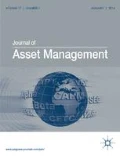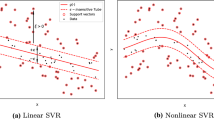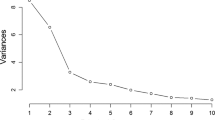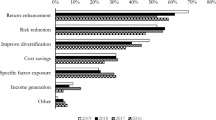Abstract
The performance of stock relative to its peer group is influenced by a multitude of factors and their interactions, which are typically modelled by investment practitioners in a classical parametric framework. Although such models are in many cases useful for identifying linear interactions, they are less well suited to capturing the higher-order relationships between a company's fundamental characteristics and its subsequent relative return. Despite this, non-parametric and non-linear approaches such as classification and regression trees (CART) have been largely overlooked by the finance industry, which still relies heavily upon linear factor models. This article investigates the use of CART for stock selection within North America in order to highlight some of the advantages of adopting a broader suite of modelling tools. Its focus is on the period since the onset of the Global Financial Crisis in 2007 to late 2010 – a period associated with elevated volatility and sharp swings in investor sentiment. More specifically, we directly compare a CART model against a more traditional linear framework. We observe that the performance of portfolios formed from a tree-based model was quite robust during both the 2007/2008 downturn in equities and the subsequent market recovery. As such, we believe that stock selection models based on the CART approach offer an attractive opportunity to diversify model risk.

Similar content being viewed by others
Notes
The survey results can be found in the articles by Fabozzi et al (2007) and Fabozzi et al (2008).
Financial stocks were excluded because of their different accounting structure, which makes comparisons with non-financials troublesome. However, the authors have successfully built stock selection models for financials that are not reported in this article.
The greater influence of stock valuation differs from that of Sorensen et al (2000), which placed more emphasis on momentum, although this model was only applied to US Technology stocks.
References
Ang, A. (2008) The Quant Meltdown: August 2007. Columbia CaseWorks ID#080317.
Breiman, L., Friedman, J., Olshen, R. and Stone, C. (1984) Classification and Regression Trees. Belmont, CA: Wadsworth.
Fabozzi, F.J., Focardi, S.M. and Jonas, C. (2007) Trends in quantitative equity management: Survey results. Quantitative Finance 7 (2): 115–122.
Fabozzi, F.J., Focardi, S.M. and Jonas, C. (2008) On the challenges in quantitative equity management. Quantitative Finance 8 (7): 649–665.
Fama, E.F. and French, K.R. (1996) Multifactor explanations of asset pricing anomalies. Journal of Finance 51 (1): 55–84.
Frydman, H., Altman, E.I. and Kao, D.L. (1985) Introducing recursive partitioning for financial classification: The case of financial distress. Journal of Finance 40 (1): 269–291.
Haugen, R.A. (ed.) (2009) The past and the future. The New Finance: Overreaction, Complexity, and Their Consequences. Boston, MA: Prentice Hall, pp. 35–45.
Hsieh, D.A. (1991) Chaos and nonlinear dynamics: Applications to financial markets. Journal of Finance 46 (5): 1839–1877.
Kao, D.L. and Shumaker, D.R. (1999) Equity style timing. Financial Analysts Journal 55 (1): 37–48.
Khandani, A.E. and Lo, A.W. (2011) What happened to the quants in August 2007: Evidence from factors and transactions data. Journal of Financial Markets 14 (1): 1–46.
Lakonishok, J., Shleifer, A. and Vishny, R.W. (1994) Contrarian investment, extrapolation and risk. Journal of Finance 49 (5): 1541–1578.
Lintner, J. (1965) The valuation of risk assets and the selection of risky investments in stock portfolios and capital budgets. Review of Economics and Statistics 47 (1): 13–37.
Ross, S. (1976) The arbitrage theory of capital asset pricing. Journal of Economic Theory 13 (3): 341–360.
Sharpe, W.F. (1964) Capital asset prices: A theory of market equilibrium under conditions of risk. Journal of Finance 19 (3): 425–442.
Shively, P.A. (2003) The nonlinear dynamics of stock prices. Quarterly Review of Economics and Finance 43 (3): 205–517.
Sorensen, E.H., Miller, K.L. and Ooi, C.K. (2000) The decision tree approach to stock selection. Journal of Portfolio Management 27 (1): 42–52.
Acknowledgements
We thank Michael O’Brien and Richard Lawson from the QEP Global Equities Team at Schroders for assistance with the stock data. This article is drawn from the PhD dissertation of Min Zhu at the University of Sydney where she was financially supported by the Capital Market Cooperative Research Centre (CMCRC). The view expressed in this article are the authors’ and do not necessarily reflect the views of Schroders.
Author information
Authors and Affiliations
Corresponding author
Rights and permissions
About this article
Cite this article
Zhu, M., Philpotts, D. & Stevenson, M. The benefits of tree-based models for stock selection. J Asset Manag 13, 437–448 (2012). https://doi.org/10.1057/jam.2012.17
Received:
Revised:
Published:
Issue Date:
DOI: https://doi.org/10.1057/jam.2012.17




